Pachycheles rudis Stimpson, 1860Common name(s): Lumpy porcelain crab, Thick-clawed porcelain crab |
|
| Synonyms: |  |
| Phylum Arthropoda
Subphylum Crustacea Class Malacostraca Subclass Eumalacostraca Superorder Eucarida Order Decapoda Suborder Pleocyemata Infraorder Anomura Superfamily Galatheoidea Family Porcellanidae |
|
| Pachycheles rudis male, found at minus tide under rock with female, Sares Head. Carapace width 1.4 cm. | |
| (Photo by: Dave Cowles, June 26, 2005) | |
How to Distinguish from Similar Species: Petrolisthes species have flat, smooth chelae. Pachycheles pubescens has 7 plates on the telson, a thick covering of setae on the chelae, and the carpus of the cheliped has 3-4 uneven, serrated teeth on the anterior (Carlton: inner) margin.
Geographical Range: Kodiak, Alaska to Bajia Magdalena, Baja California
Depth Range: Low intertidal to 29 m; mostly intertidal in Puget Sound
Habitat: In rocky areas, especially on semiprotected coasts. May be in abandoned holes of boring clams, kelp holdfasts, empty barnacle shells, eelgrass roots, mussel clumps, pilings.
Biology/Natural History: Are often found in male-female pairs in holes, which they may grow too large to escape from. The larger claw may be either the right or the left. Males and females are of similar size.
The branchial chamber of this crab is sometimes parasitized by the bopyrid isopod Aporobopyrus muguensis. This reduces fecundity by about 50%.
Porcellanid crabs are filter feeders.
| Return to: | |||
| Main Page | Alphabetic Index | Systematic Index | Glossary |
References:
Dichotomous Keys:Carlton, 2007
Coffin, 1952
Flora and Fairbanks, 1966
Hart, 1982
Kozloff 1987, 1996
Smith and Carlton, 1975
Wicksten, 2009
General References:
Brusca
and Brusca, 1978
Hinton,
1987
Johnson
and Snook, 1955
Morris
et al., 1980
Niesen,
1994
Niesen,
1997
Scientific
Articles:
MacMillan,
Floy E., 1972. The larval development of northern
California
Porcellanidae (Decapoda: Anomura) I. Pachycheles
pubescens
Holmes in comparison to Pachycheles rudis
Stimson. Biological
Bulletin 142: 57-70
Rodriguez, Irene Teresa, Gonzalo Hernández, Isabel Magán, Juan A. Bolaños, and Darryl L. Felder, 2004. Larval development of Pachycheles serratus (Decapoda: Anomura: Porcellanidae) under laboratory conditions, with notes on the larvae of the genus. Journal of Crustacean Biology 24(2): 291-308
Van Wyk, P.M., 1982. Inhibition of the growth
and
reproduction
of the porcellanid crab Pachycheles rudis by the
bopyrid isopod,
Aporobopyrus
muguensis. Parasitology 85: 459-473
General Notes and Observations: Locations, abundances, unusual behaviors:
I found a pair on Sares Head June 23, 2005, in a hole at minus tide level. Carapace width was 1.4 cm. The female was carrying eggs. I don't often find this species on Sares Head.
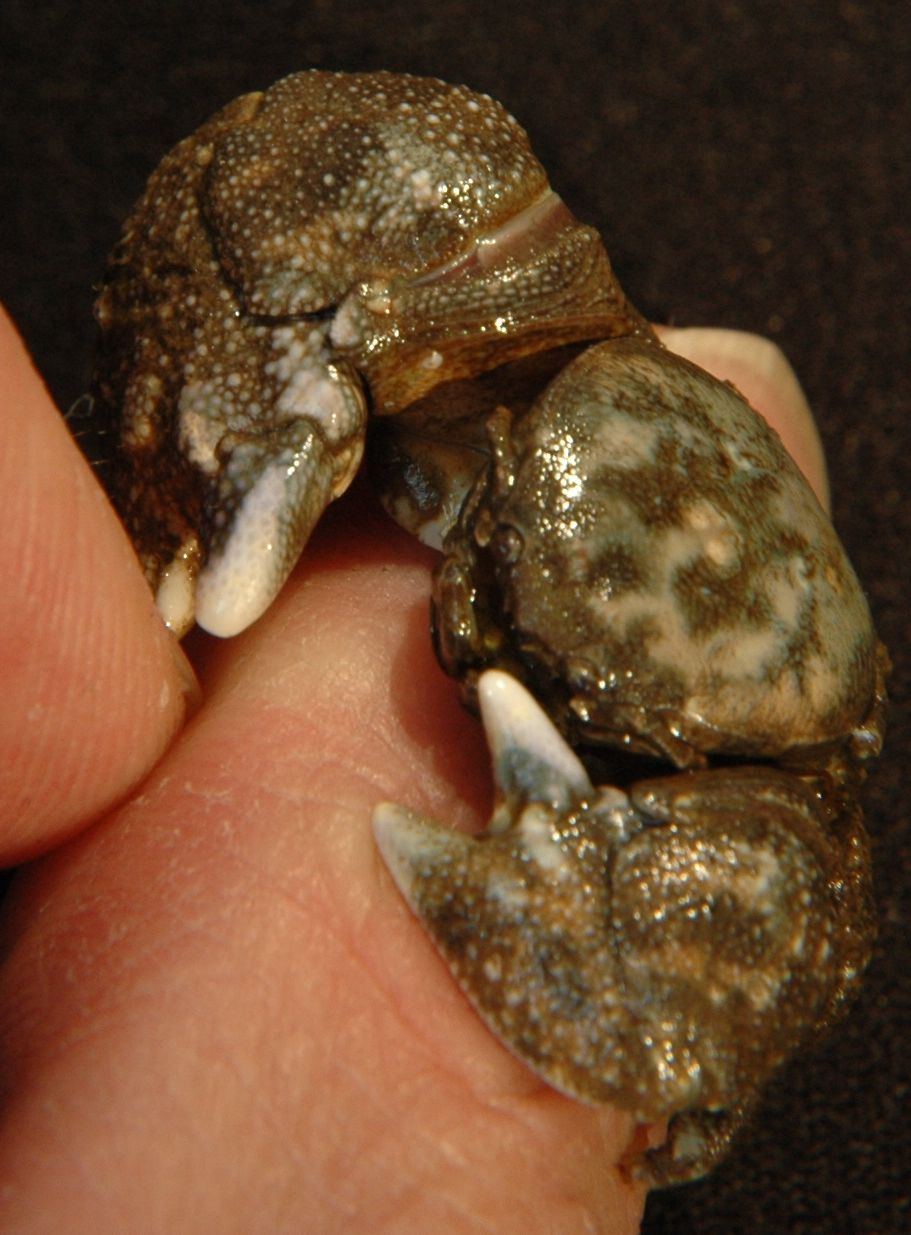
Male Pachycheles rudis, showing the broad, triangular lobed anterior margin of the carpus of the cheliped. Carlton says it is the inner margin of the carpus which has the triangular lobe. |
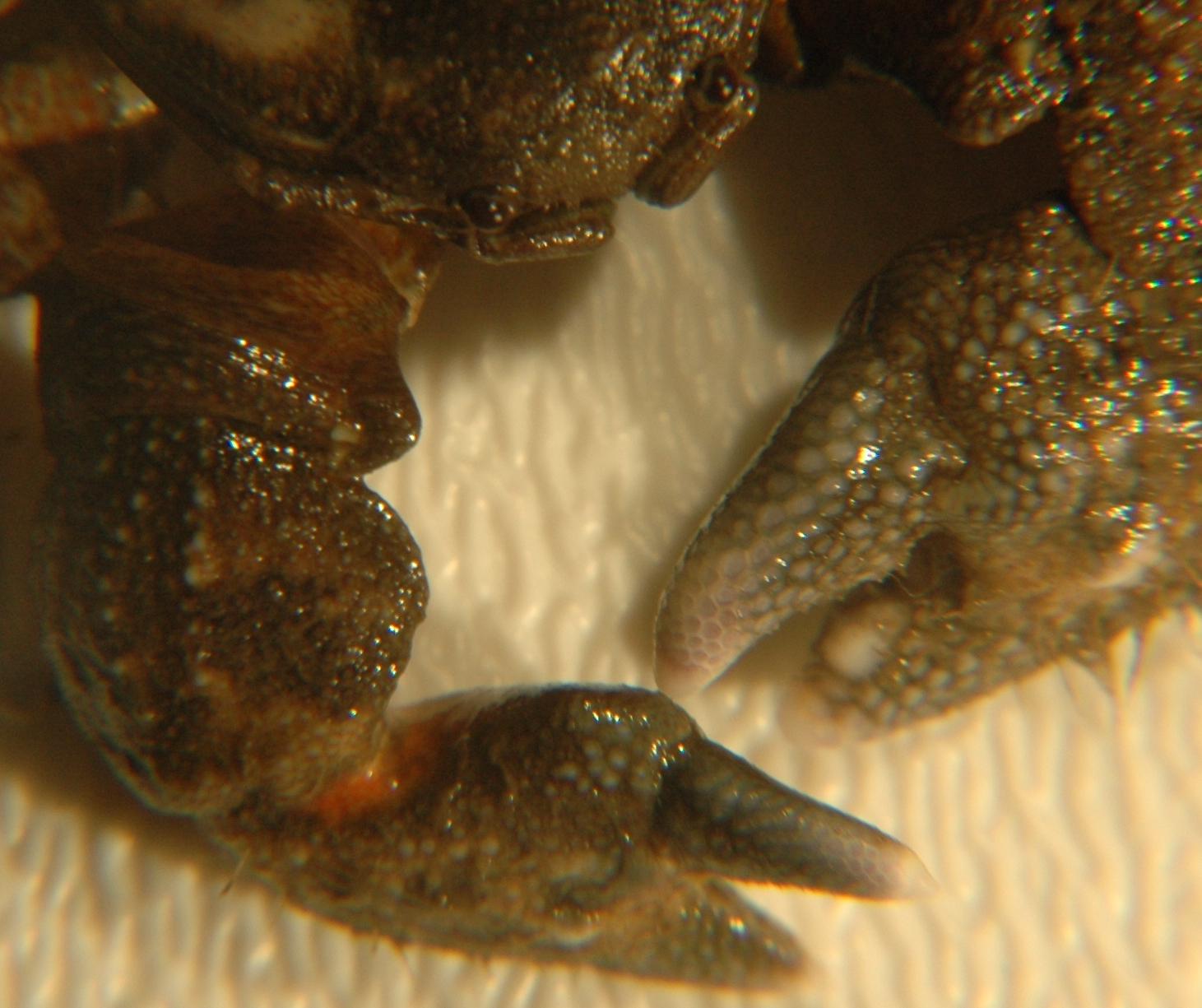
A female showing the triangular lobed margin of the carpus of the cheliped. |
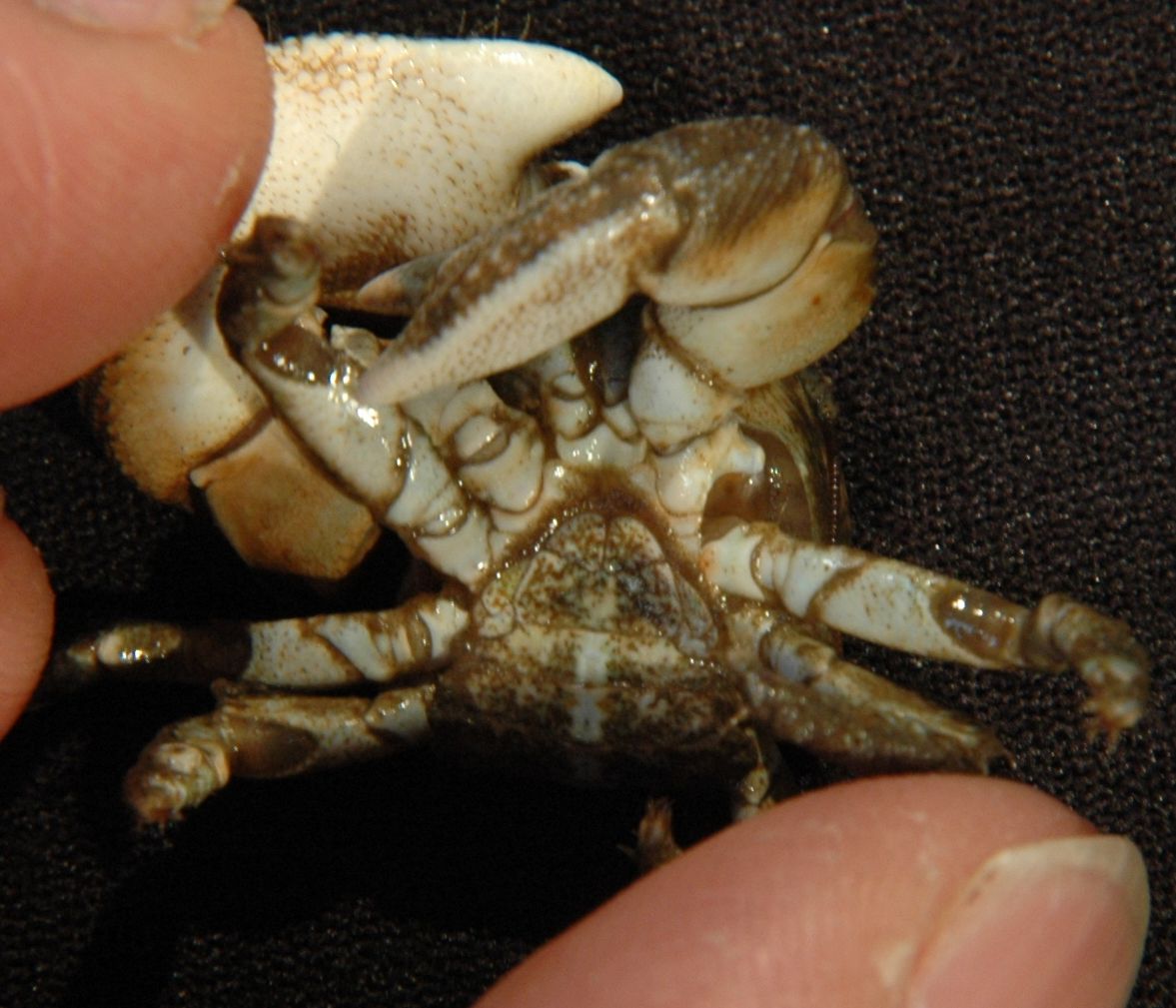
The telson of this species has 5 plates.
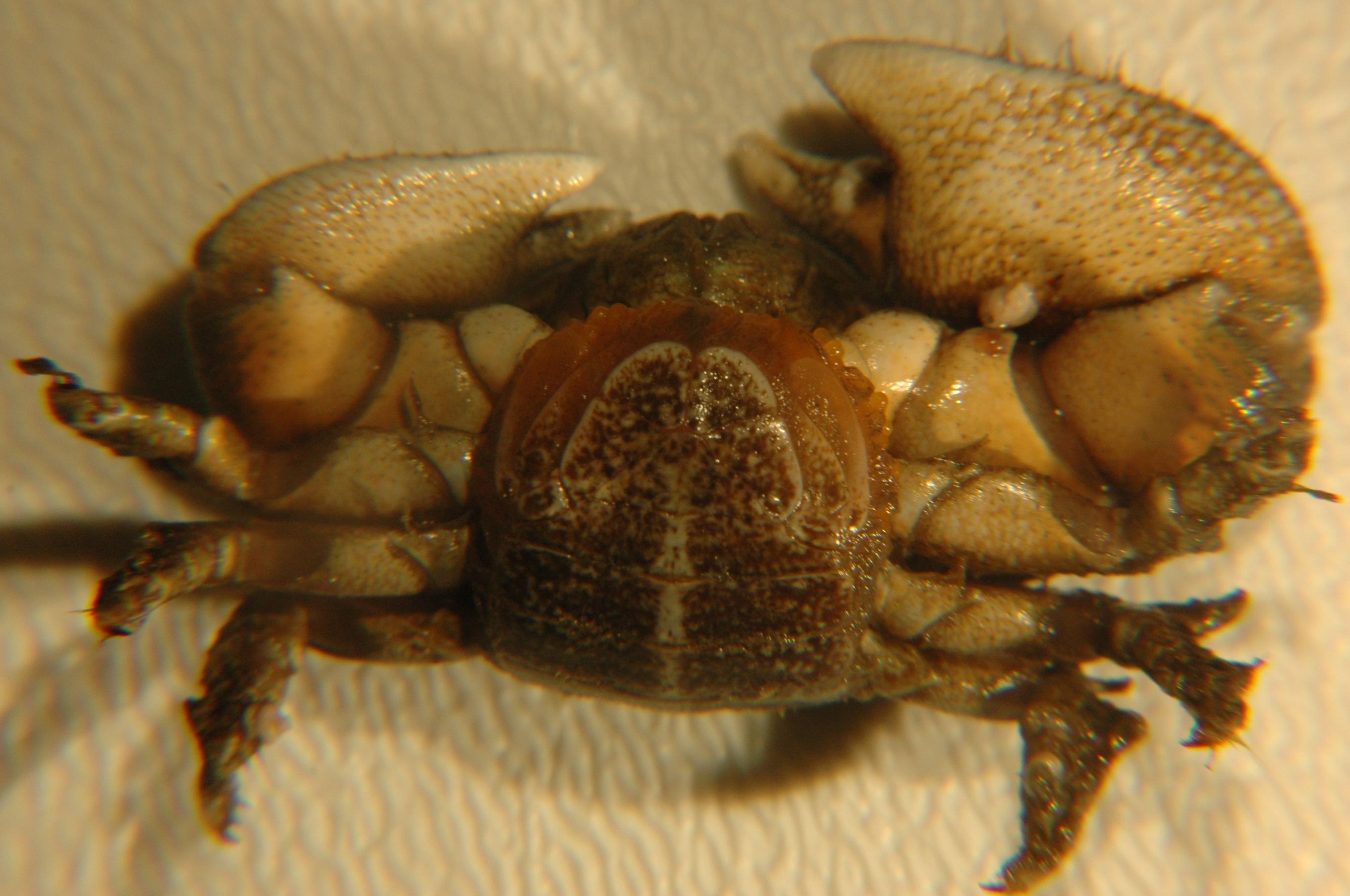
This female is carrying eggs. Note also that this
individual's
left chela
is largest, while the left one of the male above is largest.
Photographed
by Dave Cowles June 25, 2005.
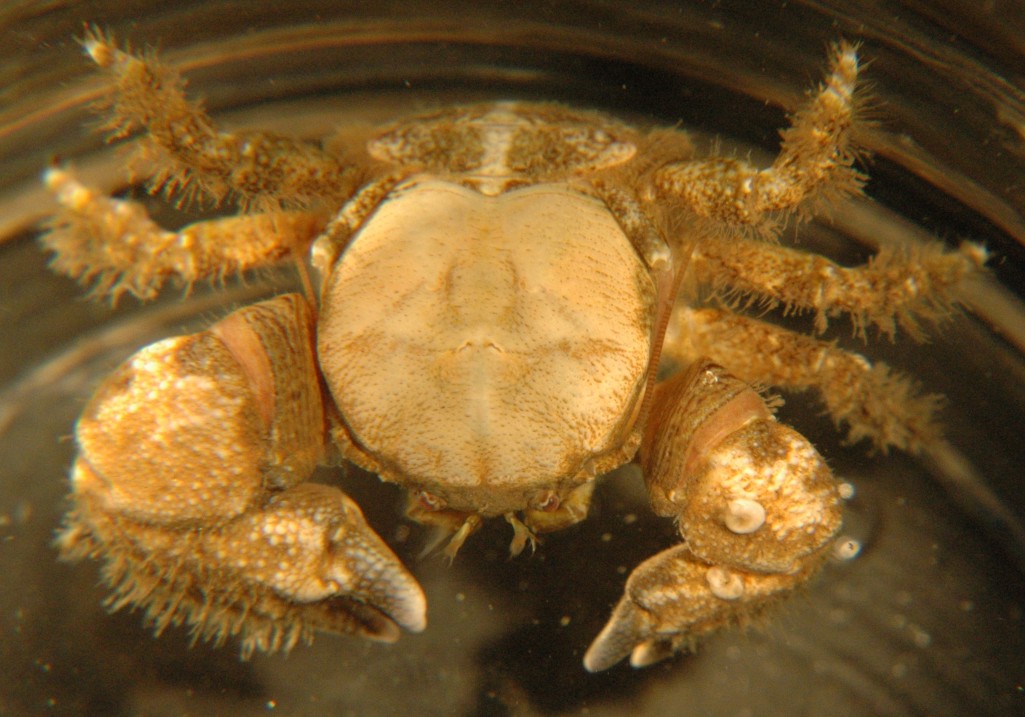 |
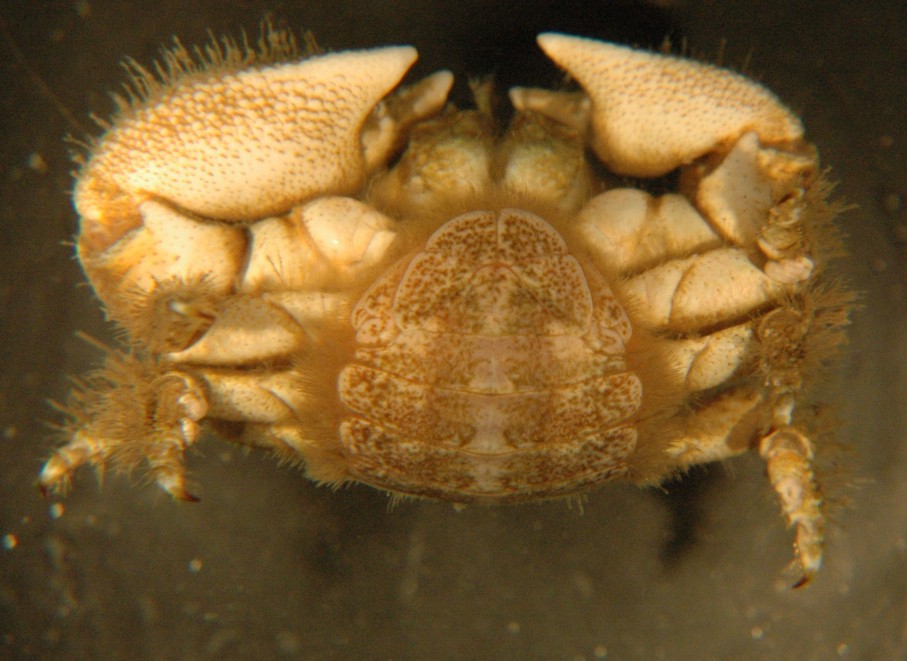 |
| This gravid female was found under a low intertidal rock at Sares Head in June, 2010. Carapace width 1.4 cm. Notice that she has far more setae on her chelipeds and legs than the two individuals above have. She is carrying many light orange eggs but they do not protrude out from the edges of her abdomen. In this female the right chela is largest. Note the long antennae characteristic of porcellanid crabs. | |
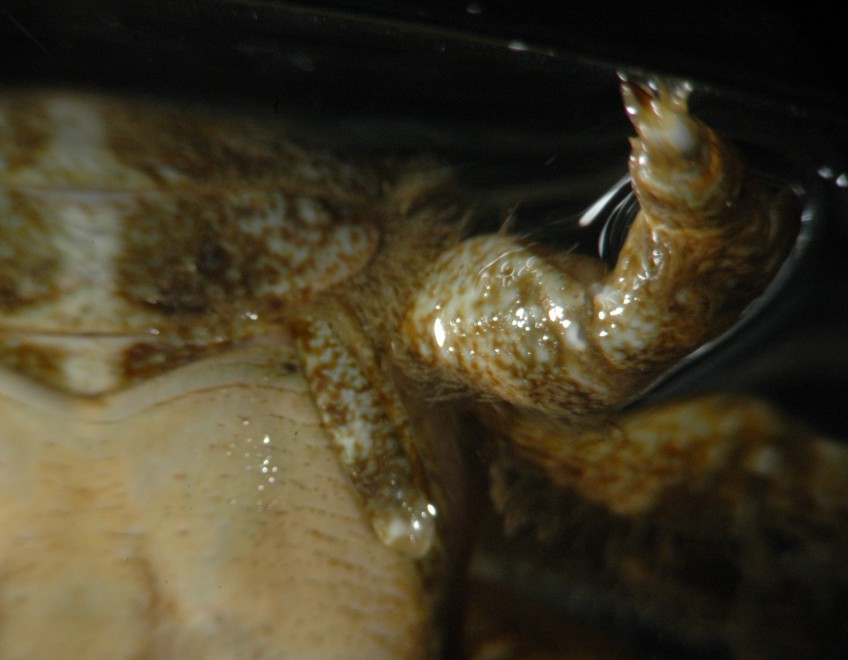 |
 |
| This closeup photo of the back portion of her dorsal carapace shows the small 5th leg folded up over her back, which is characteristic of many Anomurans. The much larger left 4th leg is extending up toward the camera. | This closeup of her underside shows the well-developed, flattened uropods which along with the telson form a tailfan at the end of her abdomen, plus the long, fine setae which help hold her eggs in place. The abdomen is folded under the thorax and the bases of the thoracic walking legs (pereopods) can be seen to the sides and the maxillipeds at the top. |

This bluish individual, nestled in an empty Mytilus californianus shell, was found and photographed by Sidney Folkenberg at Kalaloch Beach #4 on July 10, 2025.
Authors and Editors of Page:
Dave Cowles (2005): Created original